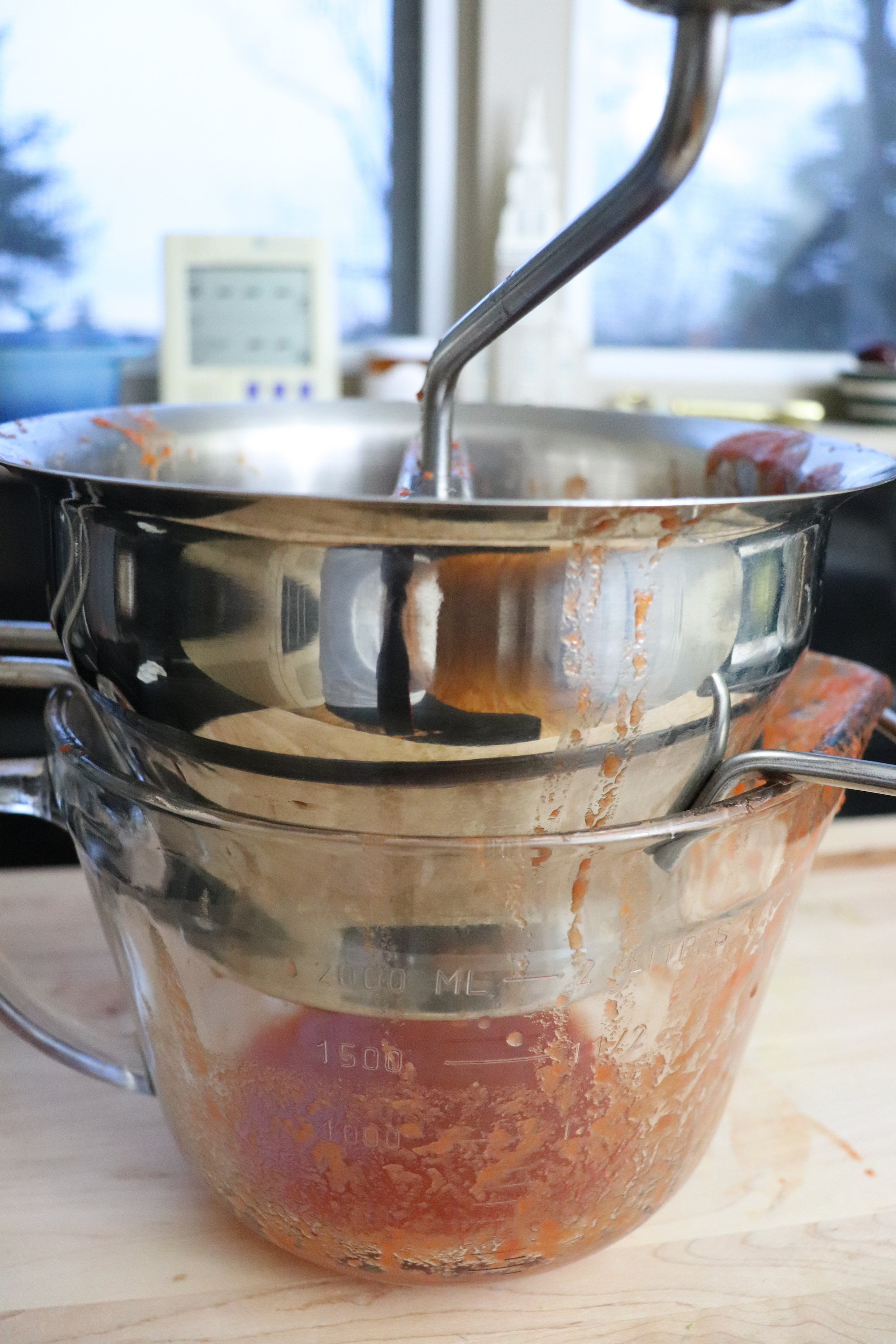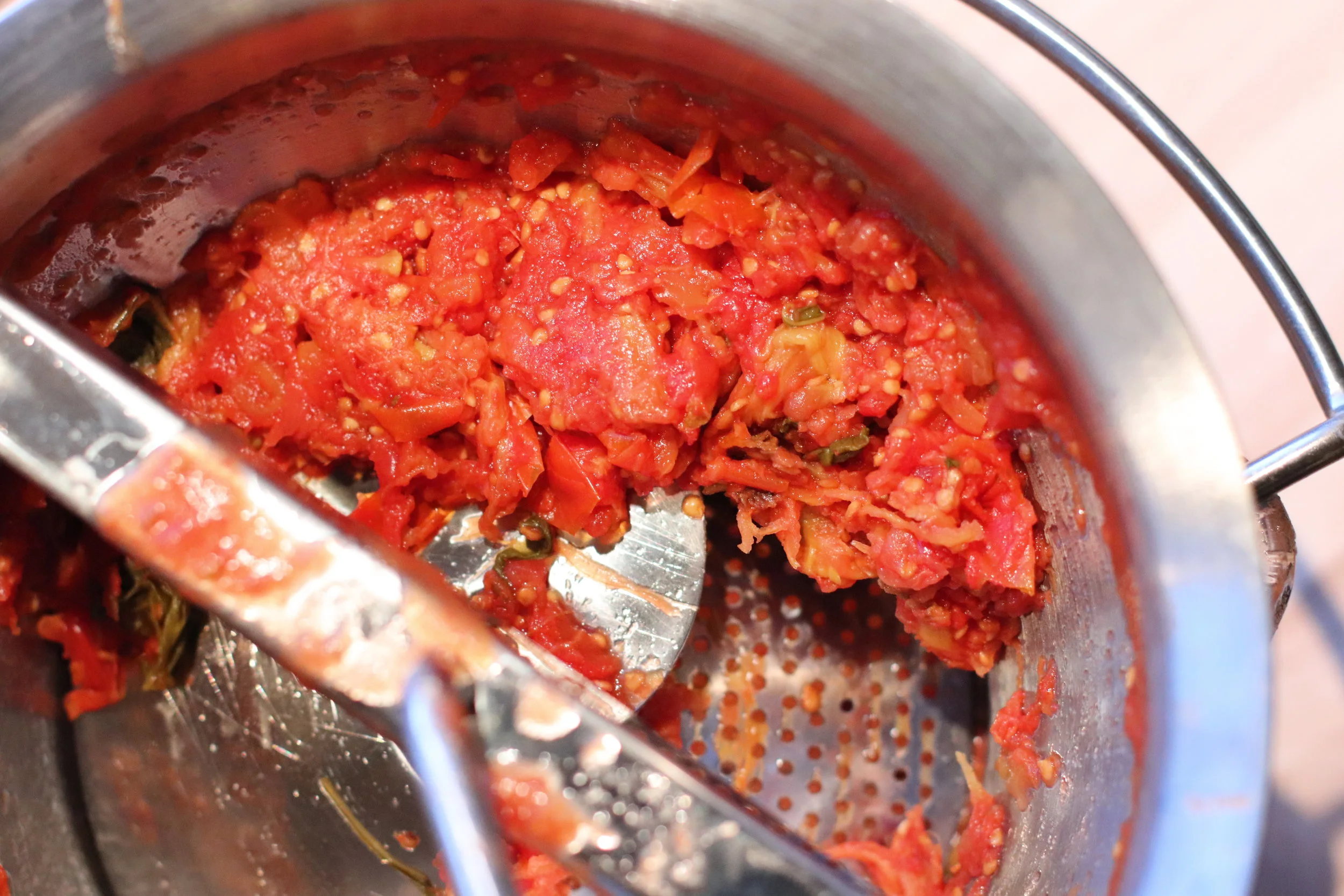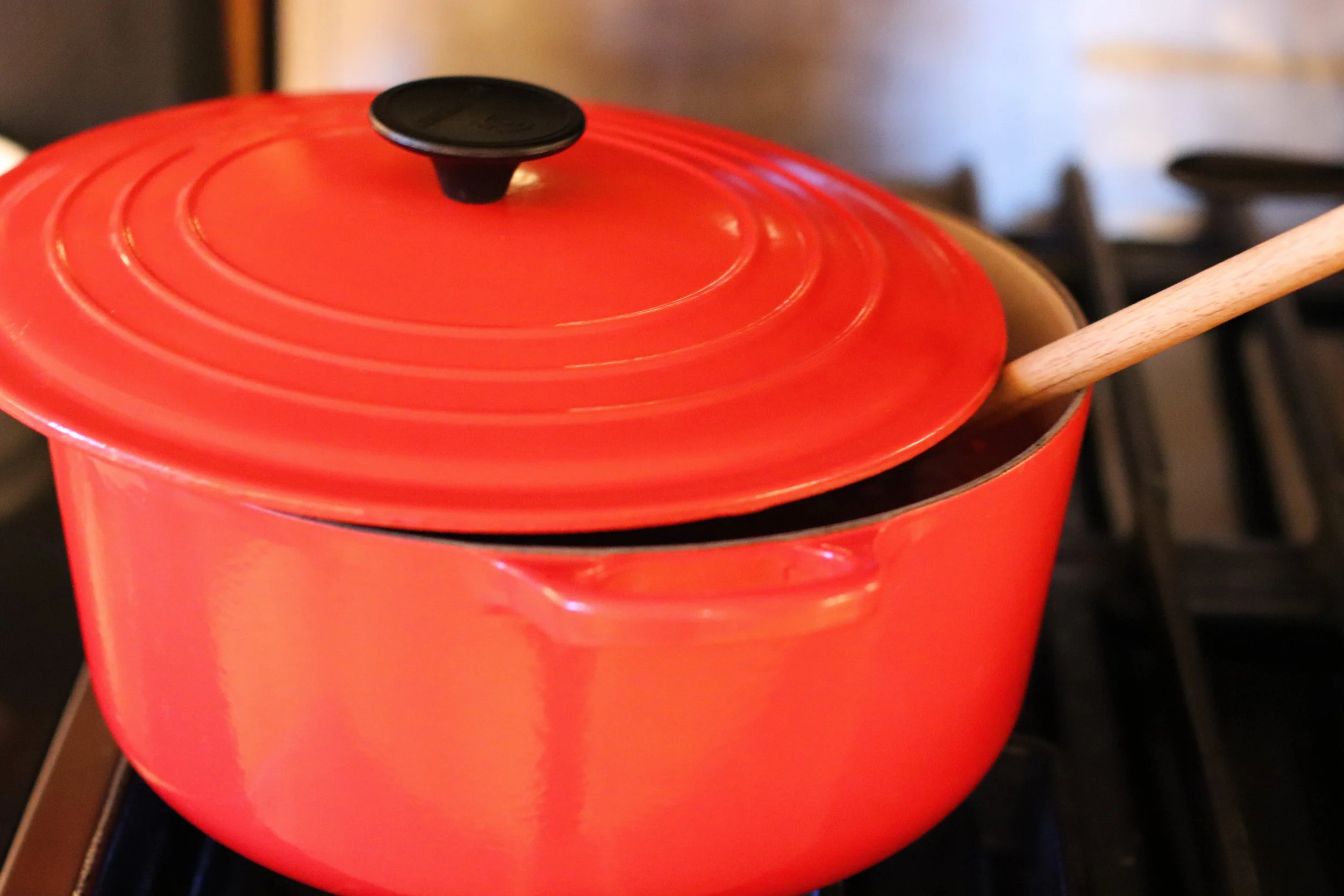Tomato Sauce
I am very passionate about my tomato sauce. It plays a starring role in my two favorite meals: pizza, and spaghetti with meatballs. It also plays a starring role in my childhood memories. Although my mom wasn't Italian, sauce was one of the first things my Italian grandmother (I love this picture of my grandparent's wedding day) taught her new daughter-in-law how to make. I have very clear memories of the orange colored enamel pot of sauce simmering on the stove for hours. My mom simmered the sauce with a beef braciole (Neopolitan style because my family is from outside of Naples), as well as my childhood favorite pigskin braciole (coodica). The pigskin gave the sauce an amazing flavor and velvety texture. As there were no other sauces I could compare it to (we never ate out or went to anybody's house for dinner), it wasn't until I was an adult that I could appreciate the excellence of my grandmother's sauce. All these years later, I've mostly remained faithful to my grandmother's sauce-making method. The only exception is that I substitute other umami flavor boosters in place of the bracioles... not only do those meats take a long time to simmer, but pigskin is very difficult to find.
My mom always used whole San Marzano tomatoes, sending them through a food mill in order to remove the cores and bitter seeds. I've tried using canned & pureed American grown tomatoes, but I always return to her method of using whole canned & peeled DOP (Denominazione D'origine Protetta) tomatoes because I think they make the best sauce. (Note: the side of the can has a yellow and red symbol that confirms its authenticity; only cans that contain the San Marzano strain of tomatoes grown in the San Marzano region of Italy are allowed to use this symbol). Each cook should decide which canned tomatoes they prefer, because there are many different imported brands and each tastes slightly different. I make sauce so often that I enjoy trying many different brands in order to figure out my favorites.
It requires a bit of work to process whole tomatoes through a food mill, but I've found that pouring them into a bowl and then breaking them up with your hands helps the process enormously. Scraping the bottom of the food mill occasionally with a rubber spatula helps keep the food mill's holes open, allowing the juices to flow more easily. My mom's food mill had a small metal wire that constantly cleaned the underside, but sadly mine doesn't. Like many things in life sometimes the older models are simply better.
Tomato Sauce
Some helpful points:
The anchovies are an integral part of this recipe because they add an incredible depth of flavor. I promise you won't even notice the fishiness, so I strongly urge you to use them.
With the parmigiano rind, it's important to stir the sauce occasionally in order to prevent the rind from sticking to the bottom of the pot. The rinds, which add a great and necessary flavor, are available at many cheese shops and grocery stores.
Many sauce recipes contain pureed onions and/or carrots. I have tried adding these vegetables, but ultimately I've decided that they suppress the powerful tomato flavor of my family's version.
The sugar doesn't add any sweetness, but rather tempers the acidity of the tomatoes.
The butter is optional, but I encourage its inclusion due to its velvety texture. Another option to add velvety richness to the sauce is to replace the butter with an equal amount of pork lard or simmer a fatty piece of pork in the sauce for 1-2 hours and then remove and discard before serving the sauce.
I prefer sauce when it sits in the refrigerator for one or two days beforehand because I think it deepens the flavor.
I make a full pot of sauce, freezing portioned leftovers in Ziploc bags for later use.
Passata adds a special thickness to the sauce, but substitute an additional can of whole peeled tomatoes if it isn't available.
Ingredients:
Three - 28 ounce (794 gram) cans of DOP San Marzano whole peeled tomatoes, broken up and sent through a food mill (if you don’t have a food mill, a food processor can be used to break down the tomatoes - although the tomato seeds won’t be removed)
One - 24 ounce (680 gram) jar of Passata Di Pomodoro (tomato puree)
¼ cup (1.8 ounces or 51 grams) garlic oil - recipe here
12 anchovy fillets (2 ounces or 57 grams) - jarred high quality variety, packed in oil
11 tablespoons tomato paste - about ⅔ cup (5.5 ounces or 156 grams)
1 Tablespoon (0.6 ounce or 17 grams) kosher salt or to taste
1-2 Tablespoons (0.6-1.2 ounce or 17- 34 grams) granulated sugar
2 teaspoon dried oregano
1 - 1 ½ Tablespoon (0.5 - 0.8 ounce or 14 - 21 grams) butter - melted (or replace with pork lard)
Parmigiano-Reggiano cheese rind
Heat garlic oil in a large pot with a heavy bottom (i.e. an enameled cast iron pot). Add anchovy fillets and sauté until anchovies break down. Add tomato paste and cook until the paste darkens (don't rush this step). Add tomatoes, salt, sugar, dried oregano (crumble in your hands as you add), and the parmigiano rind. Simmer your partially covered sauce on low heat. Stir occasionally for ~2-3 hours and add water as needed. Remove the parmigiano rind when it starts to fall apart (after ~ 1 hour). Do not add too much water to the sauce at once; you should have gradually added ~2-3 cups after 2 or 3 hours. Finish with butter. The sauce should be thick when finished, as you will be adding pasta water before serving. Cool and refrigerate for a day or two as the sauce deepens in flavor over time in the refrigerator. Reheat and serve.
Tomato Sauce
(Smaller Portion)
One - 28 ounce (794 gram) cans of DOP San Marzano whole tomatoes, broken up and sent through a food mill (if you don’t have a food mill, a food processor can be used to break down the tomatoes - although the tomato seeds won’t be removed)
2 tablespoons (0.9 ounce or 26 grams) garlic oil - recipe here
4 anchovy fillets - jarred variety, packed in oil - 0.7 ounce or 19 grams
3 tablespoons tomato paste (1.5 ounce or 43 grams)
1 teaspoon kosher salt or to taste (0.1 ounce or 3 grams)
1 teaspoon granulated sugar (0.1 ounce or 3 grams)
½ teaspoon dried oregano
½ tablespoon butter - melted (0.3 ounce or 7 grams) (or replace with pork lard)
Parmigiano-Reggiano cheese rind
Heat garlic oil in a large pot with a heavy bottom (i.e. an enameled cast iron pot). Add anchovy fillets and sauté until anchovies break down. Add tomato paste and cook until the paste darkens (don't rush this step). Add tomatoes, salt, sugar, dried oregano (crumble in your hands as you add), and the parmigiano rind. Simmer your partially covered sauce on low heat. Stir occasionally for ~1 hour and add water as needed. Remove the parmigiano rind when it starts to fall apart. Do not add too much water to the sauce at once; add gradually over 1 hour. Finish with butter. The sauce should be thick when finished, as you will be adding pasta water before serving. Cool and refrigerate. Reheat and serve.







